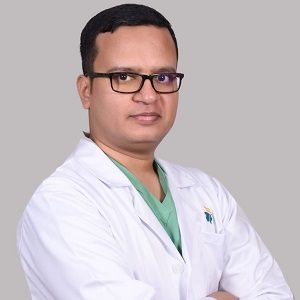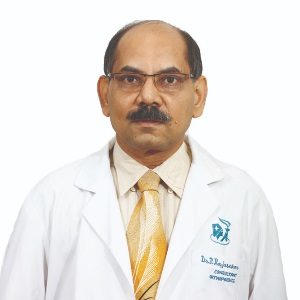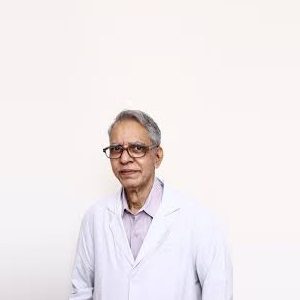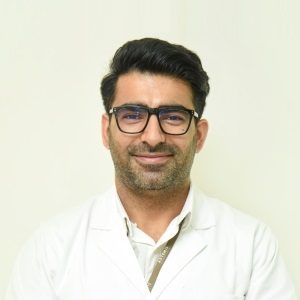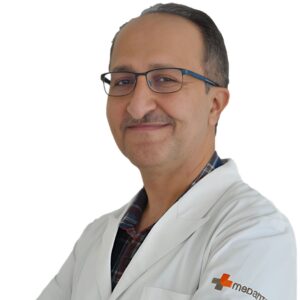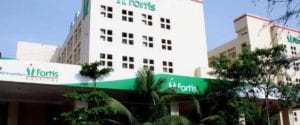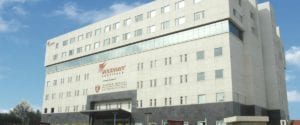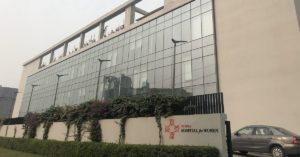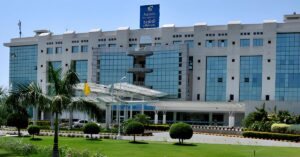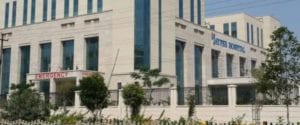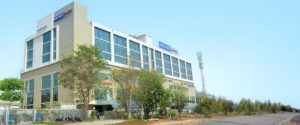Best Limb Lengthening Surgery Doctors in India
- Top Orthopedic Surgeon & Spine Surgeon | Apollo Hospitals, New Delhi, India
- 15+ Years Experience
- Indraprastha Apollo Hospital, New Delhi
Profile Highlights:
- Currently serving as a Senior Consultant in Orthopaedic Surgery at Apollo Hospitals Indraprastha, New Delhi.
- Dr. Amit Kumar Agarwal is a highly esteemed Orthopaedic surgeon with over 15 years of comprehensive experience.
- Dr. Agarwal holds an impressive array of qualifications, including MBBS, MS (Ortho), DNB (Ortho), MCh (Ortho), MNAMS, MIMSA, and Dip SICOT.
- Top Orthopedic Surgeon | Apollo Hospital, New Delhi, India
- 22+ Years Experience
- Indraprastha Apollo Hospital, New Delhi
Profile Highlights:
- Dr. Vibhu Bahl is one of the finest Orthopedist and Joint Replacement Surgeon in India. He has experience of over 22 years in this field.
- Dr. Bahl has successfully performed multiple complex and primary total knee and hip replacements over his career. Besides these, he specializes in computer-assisted total knee replacements. Patients seeking Arthroscopy for shoulder dislocation, degeneration, and repair must consult him.
- Dr. Bahl participated as a Faculty in many Arthroscopy conferences.
- He is passionate about research and has a long list of publications in prestigious national and international journals.
- Orthopedic Surgeon, Chennai, India
- Over 25 years’ experience
- Apollo Hospitals Greams Road
Profile Highlights:
- Dr. Krishnamurthy K provides consultation at the Apollo hospitals of Chennai.
- He has also worked as a senior registrar and assistant surgeon earlier and has sound knowledge of his field.
- One can reach Dr. Krishnamurthy K for treatment of fractures, joints, shoulders, knees, hip replacement, etc.
- Orthopedic Surgeon, Chennai, India
- Over 24 years’ experience
- Apollo Hospitals Greams Road
Profile Highlights:
- Dr. Rajasekar P is an experienced orthopedist with 24+ years of experience.
- He treats and consults patients with problems with Joints, fractures, osteoporosis, Spine injuries, etc.
- He is an MBBS and DNB qualified doctor and practices at Apollo hospitals of Chennai.
- Orthopedic Surgeon, Chennai, India
- Over 50 years’ experience
- Apollo Hospitals Greams Road
Profile Highlights:
- Dr. Uma Chandran S specializes in orthopedics and is a veteran surgeon at Apollo Hospitals of Chennai.
- He has spent more than 50 years in the field of orthopedics and is believed to be one of the best orthopedists in Chennai.
- He is also known for his expertise in bone replacement surgery, spine movement, fracture treatment, etc.
- Orthopedic Surgeon, Gurugram, India
- Over 10 years’ experience
- Artemis Hospital, Gurgaon
Profile Highlights:
- Irfan Banday is a brilliant young orthopedic surgeon with over 10 years of experience handling trauma surgeries and ortho problems.
- Irfan received Fellowship in Knee Arthroscopy and Arthroplasty and Shoulder and Upper Limb Arthroscopy, Arthroplasty & Reconstructive Surgery.
- He manages simple & complex fractures, Reconstructive Surgeries of the Knee, Shoulder, Upper limb, and complex tendon transfers.
- Orthopedic Surgeon, Gurugram, India
- Over 23 Years Experience
- Medanta-The Medicity, Gurgaon
Profile Highlights:
- Dr. Dahiya brings extensive expertise and experience to his role as Senior Director at Medanta The Medicity in Gurugram.
- Dr. Vivek Dahiya is a highly esteemed orthopaedic surgeon specializing in knee joint disorders and surgeries. With a comprehensive educational background including a D.N.B. in Orthopaedics and an M.D. in Physician.
- His proficiency encompasses a wide range of knee arthroscopic techniques, including diagnostic arthroscopy, meniscus surgery, cartilage preservation, and transplantation.
Best Limb Lengthening Surgery Hospitals in India
- City: Mumbai, India
Hospital Highlights:
- Fortis Hiranandani hospital was established in 2007.
- The hospital is an advanced tertiary care, multi-specialty hospital equipped with 149 beds.
- The hospital is equipped with a super ICU to provide emergency medical care to critically ill patients.
- The hospital is NABH accredited.
- The critical care facility in the hospital is augmented with the state-of-the-art facilities that facilitate speedier diagnosis and efficient monitoring.
- The hospital provides specialty medical services in cardiology, orthopedic science, pediatric science, neurology, diabetic care, urology, nephrology, ENT, obstetrics, gynecology, cosmetic surgery, bariatric surgery, neuro and spine care.
- City: Gurugram, India
Hospital Highlights:
- W Pratiksha Hospital, Gurugram, is one of the best hospitals in the NCR region. It is also a top hospital in India for IVF. Since its inception, the hospital has performed over 5500 successful IVFs. The hospital also specializes in gynecology.
- With over 20 years of experience in providing quality healthcare, the hospital is known as one of the most trusted and valued health providers in India.
- Equipped with world-class medical facilities and advanced technology, the hospital’s doctors and clinicians also have a track record of delivering excellent results. The hospital is also known for focusing on preventive well-being as much as on curative treatment.
- The hospital has earned the trust of its patients, by providing the best available treatments at affordable costs.
- City: Gurugram, India
Hospital Highlights:
- Paras hospital was established in 2006 and is the 250 bedded flagship hospital of Paras Healthcare.
- The is supported by a team of doctors of international and national repute.
- The hospital is NABH accredited and also the first hospital in the region to have a NABL accredited laboratory.
- The hospital provides specialty medical services in around 55 departments including Neurosciences, Joint Replacement, Mother & Child Care, Minimal Invasive Surgery, Gynecology and Obstetrics, Ophthalmology, Dermatology, Endocrinology, Rheumatology, Cosmetic and Plastic surgery.
- The hospital is equipped with state-of-the-art technologies.
- City: Kolkata, India
Hospital Highlights:
- Fortis Hospital, Anandapur, Kolkata is a world-class super-speciality equipped with the latest technologies in the medical world.
- The hospital is NABH accredited.
- This state-of-the-art facility specializes in cardiology and cardiac surgery, urology, nephrology, neurosciences, orthopaedics, digestive care, emergency care and critical care.
- The hospital, governed by integrated Building Management System (IBMS), has a pneumatic chute system, for quick vertical and horizontal transportation between floors, facilitating speedy transfer of patient specimens, documents, reports, and medicines to the concerned departments.
- The hospital also has a nephrology department with over 28 advanced dialysis units.
- City: Mumbai, India
Hospital Highlights:
- SL Raheja hospital is a 140-bed multi-specialty tertiary care hospital that is being managed by Fortis Healthcare Ltd.
- The hospital is a benchmark in healthcare and medical facilities in the neighborhood of Mahim & the western suburbs.
- L.Raheja Hospital, Mahim has one of the most effective ICU and Casualty care services.
- The hospital provides specialty medical services in Cardiology, Oncology, Neurology, Orthopedics, Mother & Child Care, and in Diabetes.
- City: Mumbai, India
Hospital Highlights:
- Wockhardt Hospitals were established in the year 1973, originally called First Hospitals and Heart Institute.
- Wockhardt Hospitals are super specialty health care networks in India, nurtured by Wockhardt Ltd, India’s 5th largest Pharmaceutical and Healthcare company.
- Wockhardt Hospitals is associated with Partners Harvard Medical International, an international arm of Harvard Medical School, USA.
- Wockhardt Heart Hospital performed India’s first endoscopic heart surgery.
- The hospital has a state-of-the-art infrastructure equipped with the latest technologies and modern equipment.
- It has special Centers of Excellence dedicated to the major specialties to provide hassle-free and high-quality clinical care.
- City: Gurugram, India
Hospital Highlights:
- The CK Birla Hospital in Gurugram is a NABH-accredited multi-specialty hospital.
- The hospital strives to increase the quality of healthcare by focusing on UK NHS nurse and midwife training requirements. Policies and practices derived from the National Institute for Health and Treatment Excellence (NICE) recommendations in the United Kingdom ensuring that a strong focus on safety, high-quality clinical care, and sanitation is maintained.
- The hospital’s cutting-edge technology and facilities allow for real-time communication and seamless collaboration among caregivers, ensuring accuracy and the best possible results. Those with foreign experience and accreditations make up part of the hospital’s team of clinicians.
- City: Ahmedabad
Hospital Highlights:
- As a member of the Apollo Hospitals Group, Apollo Hospitals International Limited, Ahmedabad is one of the most popular and sought-after medical facilities in Gujarat.
- Through its 6 Centres of Excellence and various affiliated branches, which cover all specialties and subspecialties, the hospital provides the most advanced clinical services.
- Since its inception in 2003, the hospital has been providing each patient with the most up-to-date medical equipment and state-of-the-art technology.
- With more than 150 successful organ transplants, including liver and renal transplants, the facility has been able to build a strong and extensive organ transplant program.
- In addition to performing 600 surgeries and caring for over 1800 patients on an IP basis, the hospital sees more than 18,000 patients on average in the outpatient department.
- With one of the biggest cardiology teams in the area, the hospital provides state-of-the-art regional care treatment in Cardiac Sciences.
- Additionally, the hospital offers a broad range of Neuro Interventional techniques to help stroke patients recover more quickly.
- City: Noida, India
Hospital Highlights:
- Jaypee Hospital is the flagship hospital of the Jaypee Group.
- This hospital has commissioned 525 beds in the first phase and has been planned and designed as a 1200 bedded multi-specialty facility.
- It holds the accreditation of the NABH and NABL.
- The hospital has state-of-the-art infrastructure equipped with the latest technologies and modern equipment like 64 Slice PET CT, Dual Head 6 Slice SPECT CT, Gamma Camera, and Da Vinci Robotic Surgery for comprehensive robotic surgical solutions.
- It has special Centers dedicated to the major specialties to provide hassle-free and high-quality clinical care.
- City: Mumbai, India
Hospital Highlights:
- Reliance Hospital is one of the best super-specialty care hospitals in Navi Mumbai.
- The main purpose of this hospital is to become a trustworthy place for the best health and hope for society. The hospital is well connected to the suburbs of Mumbai and Navi Mumbai.
- The hospital has various specialty departments, viz., Accident & Emergency, Anesthesiology, Dental Services, Dermatology, Diabetology, Dietetics Nutrition, Endocrinology, ENT, Gastroenterology, General Surgery, Gynaecology And Obstetrics, Hepato Pancreato Biliary Surgery, Infectious Disease, Internal Medicine, Interventional Radiology, Laboratory Medicine, Minimal Access Laparoscopic Surgery, Nephrology, Neurosciences, Opthalmology, Orthopaedics, Paediatrics, Pain Management Palliative Care, Physical Medicine Rehabilitation, Plastic And Reconstructive Surgery, Psychiatry, Pulmonary Medicine, Radiology, Rheumatology, Transplant, Urology Andrology, Vascular Surgery
Limb Lengthening Surgery
Limb Lengthening is a surgical procedure where the bone in the leg is separated and distracted or pulled apart so that new bone can form in the gap, resulting in an increase of the length. This procedure is mainly recommended for patients suffering from leg deformities or stunted growth.
The bone, if broken or fractured regenerates itself over time, and the same tactical method is used along with external and internal medical assistance to conduct the limb lengthening surgery.
Technique used in Leg Lengthening
The principle for leg lengthening surgery is based on distraction osteogenesis where distraction stands for pulling apart and osteogenesis stands for formation of new bone.
The device used for the lengthening process is usually called a fixator and primarily, there are two types, namely, the Internal and the External Fixator. The Internal Fixators are implanted in the bone, inside the body attached to the marrow cavity of the bone like a brace while the external fixators are attached to the bone outside the body with the help of wires and pins.
Indications for Limb Lengthening Surgery
Limb Lengthening surgery is usually recommended in case of certain leg deformities but other primary causes for it can be-
- Trauma to the skeletal structure of the limb that results in shortening or deformity of the leg
- Congenital Limb length disorder
- Chronic infection of the bone or joints in the limb
- Pediatric hip disorders
- Soft tissue scarring
- Cosmetic enhancements
Symptoms for leg discrepancy varies from patient to patient. While in some patient the difference in the leg length can be visibly noticed, others might walk with a limp. In other patients, limb length issues may start with lower back pains or right after a serious leg trauma or injury.
Diagnostic Tests needed
Limb length differences at birth or visible length differences can be diagnosed at sight. However, before recommending the surgery, your doctor might ask you to attend some physical examinations to determine the root cause of the problem. Apart from X-Rays and Sonograms, or use a physical diagnostic method known as the Gait Analysis to determine the exact reason for this deformity. For detailed imaging diagnosis, doctors may even prescribe a CT Scan of the limbs.
Limb Lengthening Surgery
The surgical procedure is usually based on factors like the cause or size of the discrepancy or the patient’s age, reaction to medical procedures before or if the surgery is actually required or not. Because there are complications involved in the limb lengthening surgery, the medical team first determines if the condition can be treated in a non-surgical method. If the leg discrepancy is minute or negligible, the doctors might put the patient on observation to diagnose whether the condition is growing or not. Non-surgical methods also include wearing specialized shoes that provide an external lift to help ease activities like walking.
However, if the discrepancies are too prominent, the surgical procedure is suggested to stop or halt the limn differences.
Preparation for surgery
There are no exclusive preparation methods for this surgical procedure. However, patients are requested to help their medical team with a detailed breakdown of their past medical history including past or ongoing medications which includes herbal supplements, vitamins, homeopathy medicines, OTC or NSAIDs. Patients are also requested to ask their healthcare provider for any additional dietary regulations that they should follow before the surgery.
Explanation Video
Procedure
The surgery is performed under regional or general anaesthesia to avoid pain or discomfort during the surgery.
The lengthening procedure begins with the osteotomy process where the surgeon makes a small incision to reveal the bone to be lengthened. The bone is then cut and stabilized with internal and/or external fixators.
The patient will be requested to stay back in the hospital for 2-3 days and the rehabilitation will start after the day of the surgery where the medical team will help the patient with activities like getting out of bed, moving the joints, walking through crutches, etc. The lengthening process, however, starts a few weeks after the surgery has been performed.
Post-Operation Recovery
The surgical procedure is quick but the main lengthening process is based on the recovery from the surgical procedure which is usually done over two elaborate phases.
Distraction Phase
The actual limb lengthening procedure is done in the Distraction Phase where the internal or external fixators gradually lengthens the bone, 1 millimetre each day. The patients are usually at their best phase at this time since the bone are still distracted. Over the course of recovery, the muscles around the distraction point strengthen and movement or flexibility starts becoming harder and harder. The gap between the two distracted bone starts regenerating with new bone tissues.
The patients are requested to strictly follow therapy every single day since this is crucial for the lengthening process. Physiotherapists and the patient’s caregivers are both requested to conduct weekly and weekend physical therapy. The lengthening process works on how effective the therapy is. More the therapy the better the lengthening.
Consolidation Phase
On reaching the desired length, the patients reach the consolidation phase where the fixators are no longer adjusted for lengthening. The fixators however still remain in the leg as the newly formed bone now hardens throughout the course. Most patients are requested to stay back in the hospital during the distraction phase but they can be discharged during the consolidation phase based on their recovery progress. The bone healing process, however, is closely monitored by the medical team through image diagnostic tests such as X-rays or CT Scans.
At Home Care & Precaution
Caregivers are asked to constantly help the patient throughout the recovery process. From helping them with their daily activities to helping them through therapy, both physiotherapists and at-home caregivers have to spend a substantial amount of time helping the patient undergo the lengthening, hardening of the newly formed bone, and the recovery process in total.
Patients are requested to consult the doctor regarding showers, daily activities, re-joining work or for special diets to increase the recovery rate.
FAQs
How long do I have to stay in the hospital after the limb lengthening process?
The hospital stay after the surgery can be for 2-3 days but most patients opt to stay back in the hospital when they are going through their distraction phase. Patients can go home once they enter the consolidation phase.
What is the recovery time for leg lengthening surgery?
The lengthening process varies from patient to patient based on their reaction to therapy, immune system, and more. Generally, the recovery time period can be between 12-14 weeks from the day of surgery.
Are there any risks associated with the leg lengthening surgery?
Even though rare, risks such as infection during the new bone formation process has been documented.
When can I remove the fixators from my leg?
Every patient’s recovery phase will differ from one another. Usually, the pins or the fixators are removed when the patient is nearing the end of his/her consolidation phase.
What is the success rate for leg lengthening procedure?
Limb lengthening surgeries have over 90% success rate with expert surgeon.

